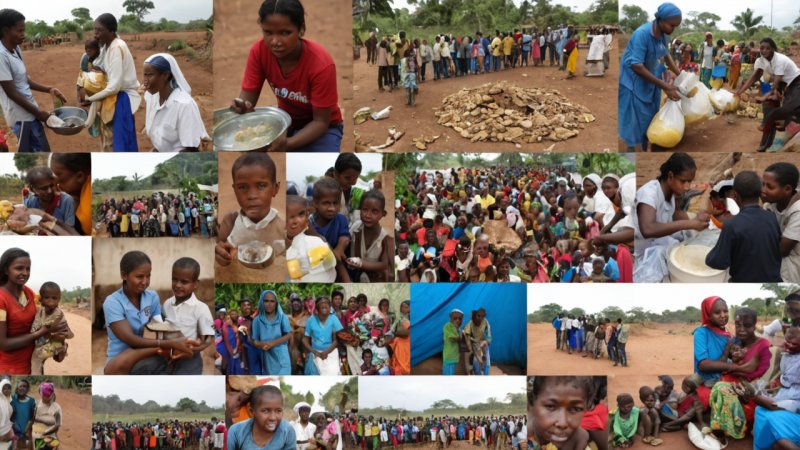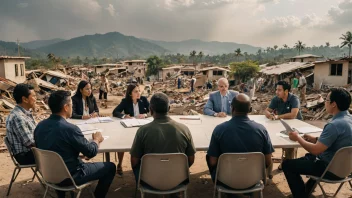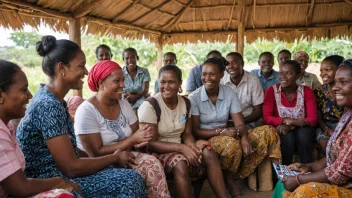The intersection of humanitarian aid and development is a critical area of focus in the quest for sustainable solutions to global challenges. As the world faces increasing crises—whether due to natural disasters, conflicts, or economic instability—the need for effective humanitarian response coupled with long-term development strategies has never been more urgent. This article delves into the intricate relationship between humanitarian aid and development, examining how these two fields interact, the challenges they face, and the implications for communities worldwide.
Understanding Humanitarian Aid
Humanitarian aid refers to the assistance provided to alleviate human suffering in times of crisis. This aid can take various forms, including food, shelter, medical care, and emotional support. The primary goal of humanitarian aid is to save lives, alleviate suffering, and maintain human dignity during and after crises.
Types of Humanitarian Aid
Humanitarian aid can be categorized into several types:
- Emergency Relief: Immediate assistance provided in response to disasters or conflicts.
- Development Aid: Long-term assistance aimed at improving living conditions through various programs, including education, healthcare, and infrastructure.
- Food Assistance: Provision of food and nutritional support to those facing food insecurity.
- Medical Aid: Healthcare services and supplies to address health crises.
- Psychosocial Support: Emotional and psychological assistance for trauma victims.
The Role of Development
Development, on the other hand, is a broader concept that encompasses economic growth, social progress, and environmental sustainability. It aims to improve the quality of life for individuals and communities, focusing on long-term solutions rather than temporary fixes.
Key Areas of Development
Development initiatives often target several key areas:
- Education: Promoting literacy and access to education to empower individuals and communities.
- Healthcare: Strengthening health systems and promoting wellness to improve overall community health.
- Economic Development: Fostering job creation, entrepreneurship, and sustainable livelihoods.
- Environmental Sustainability: Protecting the environment and promoting sustainable practices.
The Intersection of Humanitarian Aid and Development
The relationship between humanitarian aid and development is complex and multifaceted. While humanitarian aid addresses immediate needs, development seeks to create lasting change. However, these two fields are not mutually exclusive; rather, they can complement each other when strategically aligned.
Complementary Approaches
In many cases, humanitarian interventions can provide a foundation for development efforts. For instance, after a natural disaster, immediate humanitarian assistance can stabilize a community, allowing development programs to be implemented effectively. Conversely, development initiatives can enhance community resilience, reducing the impact of future crises.
Challenges in Integration
Despite the potential for synergy, integrating humanitarian aid and development efforts presents several challenges:
- Funding Differences: Humanitarian aid is often funded through short-term grants, while development projects typically require long-term investments.
- Different Goals: Humanitarian organizations focus on immediate relief, while development organizations prioritize sustainable growth, which can sometimes lead to conflicting priorities.
- Coordination Issues: Lack of effective coordination between humanitarian and development actors can lead to duplication of efforts and ineffective resource allocation.
Case Studies: Successful Integration
Several initiatives around the world have successfully integrated humanitarian aid and development efforts, demonstrating the potential for collaborative approaches:
1. The Sphere Standards
The Sphere Standards provide a framework for humanitarian organizations to deliver effective aid while considering the long-term needs of communities. By emphasizing accountability and quality, these standards encourage organizations to think beyond immediate relief.
2. The Cash Transfer Approach
Cash transfer programs, which provide financial assistance to individuals in need, have proven effective in both humanitarian and development contexts. By giving recipients the flexibility to meet their own needs, these programs empower communities while supporting local economies.
3. Transitional Shelter Programs
After disasters, transitional shelter programs provide temporary housing while promoting community rebuilding efforts. These programs often incorporate local materials and labor, fostering economic development in the recovery phase.
How Individuals Can Get Involved
Individuals play a crucial role in supporting the integration of humanitarian aid and development. Here are some ways to get involved:
- Volunteer: Offer your time and skills to local organizations working in humanitarian aid or development.
- Advocate: Raise awareness about the importance of integrating humanitarian aid and development efforts in your community.
- Educate Yourself: Stay informed about global issues and the work of humanitarian and development organizations.
- Support Local Initiatives: Engage with and support local community projects that address both immediate needs and long-term development goals.
Conclusion
The relationship between humanitarian aid and development is vital for addressing the pressing challenges faced by communities worldwide. By understanding how these two fields intersect and complement one another, we can work towards more effective and sustainable solutions. As individuals, we have the power to contribute to this effort, whether through volunteering, advocacy, or supporting local initiatives. Together, we can create a world where humanitarian aid and development work hand in hand to build resilient communities and ensure a brighter future for all.






